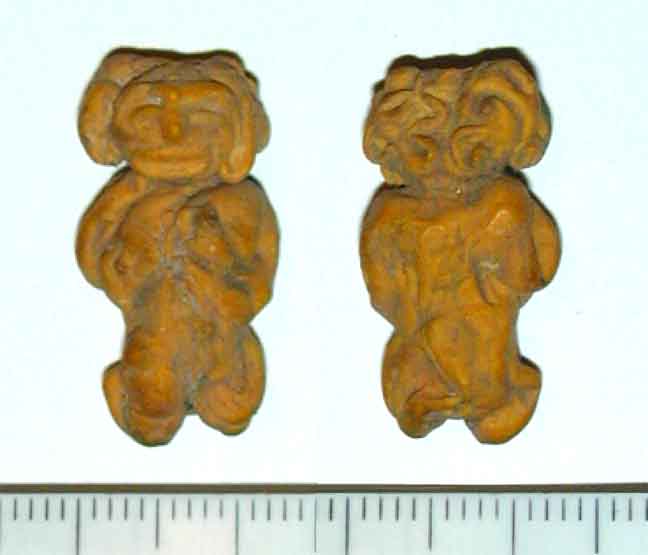| Beads for the Fake Antiquities Market | |||||
| Re: Ferry's Beads - Ducks (Gooses?) -- Beadman | Post Reply | Edit | Forum | Where am I? | |
04/28/2009, 14:57:43
And, unfortunately, I believe it is largely because I have publicized how the original ancient beads were made, and how they can be distinguished from the fakes, that has also educated beadmakers regarding authentic or authentic-looking techniques that allow for better reproductions—that can be successfully passed-off as authentic. Then, when these beads are artificially aged, it becomes difficult to not think the intent of these actions is to be successfully deceptive about origins.
Here, I want to show a few other products I bought from Ferry, that can be seen in various books, or are interesting pieces.
The 1st photo here shows two sides of a single bead—a so-called "duck bead," that is sculptural. Similar pieces can be seen in Manik-Manik, and in my book on the Beck Collection (Magical Ancient Beads). From the time I first saw these, I recognized these were fakes, and that they were composed from other beads or the recycling of parts of glass beads—fused together and shaped into a bird. I don't believe there is any real prototype for these bead sculptures (though I could be mistaken, and can only say I haven't seen "a real one" yet). Ferry had a number of these available for sale. Because they have been published a number of times, even though they are rank fakes, they are somewhat pricey. I decided to buy one —as I often do—for educational purposes, and to document this situation for posterity.
The next photo also presents a sculptural bead, in this instance a small figural piece, that is shaped like a man or god, in the round. I'm showing the front and back. The glass is ochre yellow, and thus resembles a natural stone—so that it might be mistaken for a stone carving. I don't know of any particular glass prototype that it copies. I think that, like the ducks above, it is just something to make that is cute, and MIGHT be passed-off as something special in the antiquities market. In any event, the workmanship is cunning, and the bead itself is attractive.
JDA.


|